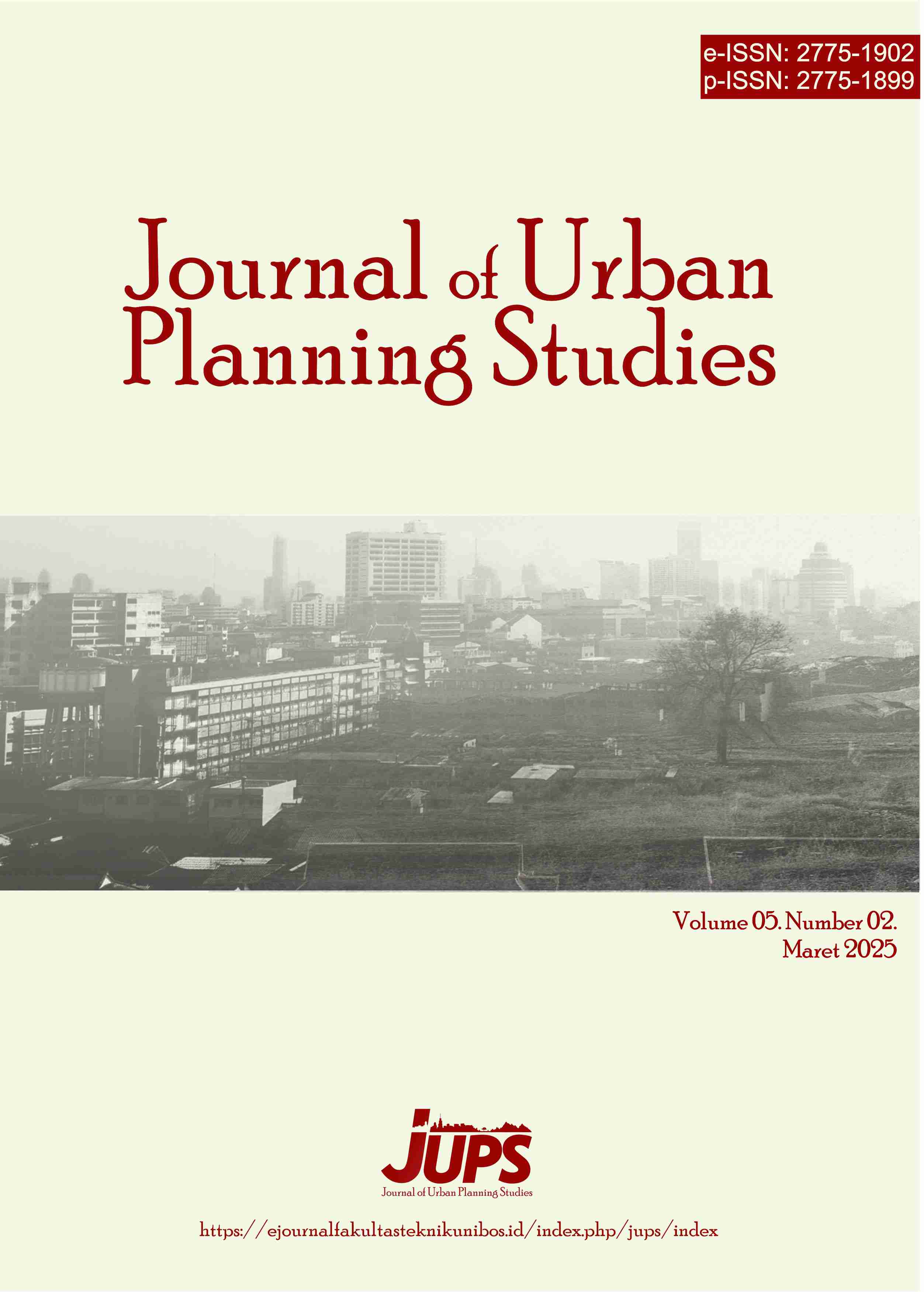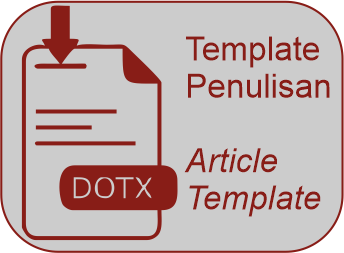Strategy To Control The Conversion Of Agricultural Land In Barombong District, Gowa Regency
DOI:
https://doi.org/10.35965/jups.v5i2.703Keywords:
Land Conversion, Causal Factors, Control StategiesAbstract
This study uses a quantitative method. Based on the results of the analysis, it shows that land use in Barombong District in 2019 is dominated by agricultural activities and rice fields with an area of 1,536.05 Ha, while in 2024 there will be a decrease, where the use of agricultural land and rice fields will change to 1,487.39 Ha. Meanwhile, residential land will increase in 2024 by 49.46 Ha. Factors that have a significant influence on the change in agricultural land conversion in Barombong District are population growth and urbanization flows. In the formulation of land conversion control strategies, the formulation of strategies based on theories and policies is used to control land conversion activities and provide instruments for controlling land use conversion.
References
A.A.A, I. M. S., Sawitri Dj, W., & Bagus Dera Setiawan, I. G. (2024). Konversi Lahan Pertanian Dan Dampaknya Terhadap Kesejahteraan Petani Dan Ketahanan Pangan Di Provinsi Bali. Jurnal Ekonomi Pertanian Dan Agribisnis, 8(1), 113.
Bolderston, A. (2021). Conducting a semi-structured interview: A practical guide for researchers. Journal of Medical Imaging and Radiation Sciences, 52(1), 12–17.
Bowen, G. A. (2022). Document analysis as a qualitative research method. Qualitative Research Journal, 22(3), 209–222.
FAO. (2021). The State of the World’s Land and Water Resources for Food and Agriculture – Systems at breaking point. Food and Agriculture Organization of the United Nations.
Firman, T., & Hudalah, D. (2021). The urbanization of peri-urban regions in Indonesia: Development of spatial planning policy responses. Cities, 114, 103196. https://doi.org/10.1016/j.cities.2021.103196
Firmansyah Fendy, Yusuf Mochamad, & ArgariniTri Okta. (2021). Strategi pengendalian alih fungsi lahan sawah di Provinsi Jawa Timur. Jurnal Penataan Ruang, 16(1), 47–53.
Firmansyah, F., Syahbana, J. A., & Rachman, A. (2021). Strategi pengendalian konversi lahan sawah berbasis spasial. Jurnal Tata Ruang dan Lingkungan, 18(2), 112–124.
Idris, S., & Amalia, L. (2020). Perubahan Pemanfaatan Lahan dan Implikasinya dalam Pengendalian Ruang Kawasan Perkotaan Sunguminasa. Jurnal Ilmiah Ecosystem, 20(April), 94–97.
Ikhwanto, A. (2019). Alih Fungsi Lahan Pertanian Menjadi Lahan Non Pertanian. Jurnal Hukum Dan Kenotariatan, 3(1), 60.
Isa, I. (2006). Strategi Pengendalian Fungsi Lahan Pertanian. National Agrarian Agency
Isa, I. (2020). Perlindungan lahan pertanian berkelanjutan: strategi dan kebijakan pengendalian alih fungsi lahan. Jurnal Agraria Indonesia, 6(1), 45–58.
Kawulich, B. B. (2021). Qualitative data collection methods: Observations, interviews, and focus groups. Journal of Social Research Methodology, 34(2), 45–59.
Lambin, E. F., & Meyfroidt, P. (2011). Global land use change, economic globalization, and the looming land scarcity. Proceedings of the National Academy of Sciences, 108(9), 3465–3472.
Lambin, E. F., Meyfroidt, P., & Rueda, X. (2023). Land-use transitions and sustainability. Nature Reviews Earth & Environment, 4(1), 6–20.
Lambin, E. F., Meyfroidt, P., Rueda, X., & Gasparri, N. I. (2023). Land-use transitions and sustainability. Nature Reviews Earth & Environment, 4(1), 6–20.
López, E., Bocco, G., Mendoza, M., & Duhau, E. (2001). Predicting land-cover and land-use change in the urban fringe. Landscape and Urban Planning, 55(4), 271–285.
Nur Alinda, S., Yanyan Setiawan, A., & Sudrajat, A. (2021). Alih Fungsi Lahan Dari Sawah Menjadi Perumahan Di Kampung Gumuruh Desa Nagrak Kecamatan Cangkuang Kabupaten Bandung. Geoarea, 04(02), 55–67.
Setiawan, B., Purwanto, A., & Rahmawati, W. (2021). Dynamics of land conversion and its impact on agricultural sustainability. IOP Conf. Series: Earth and Environmental Science, 762(1), 012014.
Seto, K. C., Guneralp, B., & Hutyra, L. R. (2012). Global forecasts of urban expansion to 2030 and direct impacts on biodiversity and carbon pools. Proceedings of the National Academy of Sciences, 109(40), 16083–16088.
Sugiyono. (2012). Metode Penelitian Kuantitatif, Kualitatif, dan R&D. Bandung: Alfabeta.
Taherdoost, H. (2022). Importance of designing effective questionnaires for survey research. International Journal of Academic Research in Management, 11(1), 1–12.
UN-Habitat. (2020). World Cities Report 2020: The Value of Sustainable Urbanization. United Nations Human Settlements Programme.
Zhang, X., Liu, Y., & Zhang, Y. (2022). Land-use change and its driving factors in peri-urban areas: A global perspective. Land Use Policy, 112, 105840.
Downloads
Published
How to Cite
Issue
Section
License
Copyright (c) 2025 Eusebia Vercelli Listiani Jehamon, Murshal Manaf, Muhammad Indris Taking

This work is licensed under a Creative Commons Attribution 4.0 International License.













